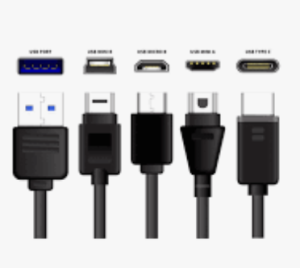
Electronic connectors are critical components in any electronic system, enabling reliable connections between circuits, devices, and subsystems. Selecting the right connector ensures performance, durability, and safety. This guide provides a comprehensive approach to choosing the ideal electronic connector for your application.
1. Types of Electronic Connectors
Connectors vary by design, function, and application. Key categories include:
By Function
- Signal Connectors: Transmit low-voltage data (e.g., USB, HDMI, RJ45).
- Power Connectors: Handle high-current applications (e.g., IEC 60320, Anderson Powerpole).
- RF/Coaxial Connectors: For radio frequency signals (e.g., SMA, BNC).
By Mounting Style
- Board-to-Board: Connect PCBs (e.g., mezzanine, pin headers).
- Cable-to-Board: Link cables to boards (e.g., FFC, IDC).
- Panel-Mount: Installed on enclosures (e.g., XLR, circular connectors).
Common Examples
- USB: Universal serial bus for data/power (USB-C supports up to 100W).
- D-Subminiature (D-Sub): Legacy serial/parallel communication.
- Terminal Blocks: For industrial power distribution.
2. Electrical Requirements
Ensure connectors meet electrical demands:
- Current and Voltage Ratings:
- Power connectors must handle system current without overheating (e.g., 20A automotive connectors).
- Voltage ratings depend on insulation quality (e.g., 250V for household appliances).
- Signal Integrity:
- High-speed data (HDMI, PCIe) requires impedance matching (e.g., 50Ω for RF).
- Shielding minimizes EMI in noisy environments.
- Contact Resistance:
- Low resistance (<20mΩ) prevents voltage drops in power applications.
3. Mechanical Considerations
Durability and physical fit are crucial:
- Mating Cycles:
- USB ports typically withstand 1,500 cycles; industrial connectors may exceed 10,000.
- Insertion/Extraction Force:
- Balance ease of use and secure mating (e.g., 5–20N for consumer devices).
- Size and Weight:
- Miniaturized connectors (e.g., JST-SH) suit wearables; larger ones (e.g., XT60) handle high power.
- Locking Mechanisms:
- Screw locks (M12 connectors) or snap-in clips prevent accidental disconnection.
- Polarization:
- Keyed designs ensure correct orientation (e.g., Micro-USB).
4. Environmental Factors
Assess operating conditions:
- Temperature:
- Commercial: 0°C to 70°C; automotive: -40°C to 125°C.
- Moisture and Dust:
- IP67/IP68 ratings (submersion up to 1m) for outdoor use.
- Vibration/Shock:
- MIL-STD-202G compliance for military/aerospace.
- Chemical Exposure:
- Stainless steel or sealed housings resist corrosion.
5. Materials and Plating
Materials impact performance and longevity:
- Contact Metals:
- Phosphor bronze (good springiness), brass (cost-effective).
- Gold plating (low voltage, high reliability), tin (economical, prone to oxidation).
- Housing Materials:
- PBT (heat-resistant), nylon (lightweight), metal (EMI shielding).
6. Standards and Certifications
Compliance ensures safety and interoperability:
- UL/IEC: Safety certifications for consumer goods.
- MIL-SPEC: Ruggedized for defense.
- RoHS/REACH: Environmental compliance.
- Automotive: USCAR, ISO 16750.
7. Supplier and Cost Considerations
- Lead Times: Stock availability vs. custom orders.
- Cost vs. Quality: Avoid cheap connectors with poor durability.
- Second Sourcing: Mitigate supply chain risks.
8. Testing and Validation
- Electrical Tests: Continuity, insulation resistance.
- Mechanical Tests: Mating cycles, pull strength.
- Environmental Tests: Thermal cycling, salt spray.
9. Application-Specific Selection
- Consumer Electronics: Compact, high-speed (USB-C).
- Automotive: Vibration-resistant (TE Mate-N-Lok).
- Medical: Sterilizable (DIN 42820).
- Industrial: IP-rated, high-current (Phoenix Contact).
10. Common Mistakes to Avoid
- Ignoring mating cycles in frequently disconnected devices.
- Overlooking wire gauge compatibility.
- Choosing non-compliant connectors for regulated industries.
11. Conclusion
Selecting the right connector involves balancing electrical, mechanical, and environmental needs. Prioritize quality, compliance, and future-proofing to ensure reliability.
- Everything You Need To Know About Limit Switch - May 21, 2025
- Everthing You Should Know About Rheostat - May 20, 2025
- Everything You Need To Know About Reversing Contactor - May 19, 2025






